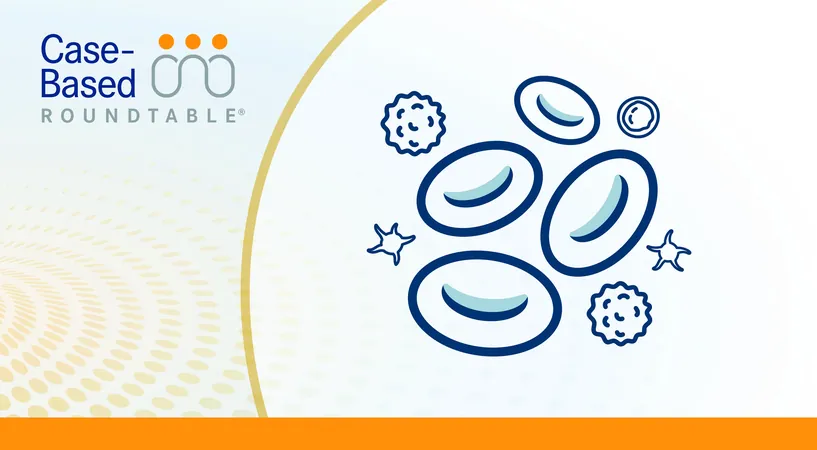
Revolutionary Regimens Transform Chronic Lymphocytic Leukemia (CLL) Treatment Landscape
2025-03-25
Author: Sarah
Recent trials have dramatically changed the treatment approach for patients with Chronic Lymphocytic Leukemia (CLL), emphasizing newer fixed-duration therapies and continuous regimens. The insights from pivotal studies like SEQUOIA (NCT03336333), ELEVATE-TN (NCT02475681), and CLL14 (NCT02242942) have ignited discussions among oncologists on the best therapeutic options available.
Key Questions Arising from the New Data
1. **Efficacy & Safety Assessments**: How do the efficacy and safety results from these trials compare? Which regimen stands out in effectiveness?
2. **CD20 Antibodies with Acalabrutinib**: Given the outcomes from ELEVATE-TN, should we consider pairing a CD20 antibody with acalabrutinib (Calquence) for better patient outcomes?
3. **VenG Evaluation**: Following the CLL14 results, is the combination of venetoclax (Venclexta) and obinutuzumab (Gazyva) an optimal choice, particularly for certain patient profiles?
4. **Continuous Therapy Perspectives**: What are expert opinions on combining Bruton tyrosine kinase inhibitors (BTKi) with continuous venetoclax treatment?
Throughout discussions, doctors emphasized the significance of patient preferences. For instance, patients may prefer a fixed-duration therapy like VenG, where treatments conclude after 12 months, rather than an indefinite treatment plan reliant on continuous therapy. Dr. Arun Bhandari noted a tendency to use BTK inhibitors (BTKi) for patients with specific genetic markers, such as a 17p deletion, which has shown to respond better to such therapies.
Cost Considerations in Treatment Selection
The financial implications of CLL therapies cannot be overlooked. Dr. Bhandari pointed out that the high costs associated with venetoclax often lead him to opt for more economical BTK inhibitors like ibrutinib (Imbruvica) when applicable. He emphasized that while both ibrutinib and acalabrutinib are effective, the cost remains a deciding factor in treatment choices.
The Impact of Genetic Markers on Treatment Outcomes
Huzefa Bahrain echoed insights about patients with the 17p deletion, suggesting they achieve better outcomes with BTKi due to their ability to rapidly control disease progression. As data emerges from ongoing trials like CLL17, the relationship between genetic mutations and treatment efficacy will be essential for tailoring therapies to specific patient needs.
Both Dr. Allan and Dr. Bhandari acknowledged that while fixed-duration therapies like VenG provide advantages, understanding the underlying biology and mutations of the disease informs the best long-term strategies. Notably, some studies revealed that higher-risk genetic profiles could lead to quicker disease recurrence, highlighting the imperative to evaluate both the immediate and long-term management of CLL.
Emerging Therapies and Future Directions
Questions remain about emerging doublet therapies, particularly combinations like ibrutinib/venetoclax and acalabrutinib/venetoclax. Initial data suggest these may offer deeper responses and prolonged progression-free survival (PFS). However, until comprehensive comparative analysis is conducted, the treatment landscape for CLL may continue to evolve, pushing healthcare professionals to adapt their strategies based on the latest research findings.
As new clinical trial results reshape our understanding of CLL treatments, patient-centric approaches and cost-effective strategies will play a crucial role in improving outcomes for individuals battling this complex disease.
Stay tuned as the CLL treatment narrative continues to unfold, potentially signaling a new era in hematologic oncology!



 Brasil (PT)
Brasil (PT)
 Canada (EN)
Canada (EN)
 Chile (ES)
Chile (ES)
 Česko (CS)
Česko (CS)
 대한민국 (KO)
대한민국 (KO)
 España (ES)
España (ES)
 France (FR)
France (FR)
 Hong Kong (EN)
Hong Kong (EN)
 Italia (IT)
Italia (IT)
 日本 (JA)
日本 (JA)
 Magyarország (HU)
Magyarország (HU)
 Norge (NO)
Norge (NO)
 Polska (PL)
Polska (PL)
 Schweiz (DE)
Schweiz (DE)
 Singapore (EN)
Singapore (EN)
 Sverige (SV)
Sverige (SV)
 Suomi (FI)
Suomi (FI)
 Türkiye (TR)
Türkiye (TR)
 الإمارات العربية المتحدة (AR)
الإمارات العربية المتحدة (AR)